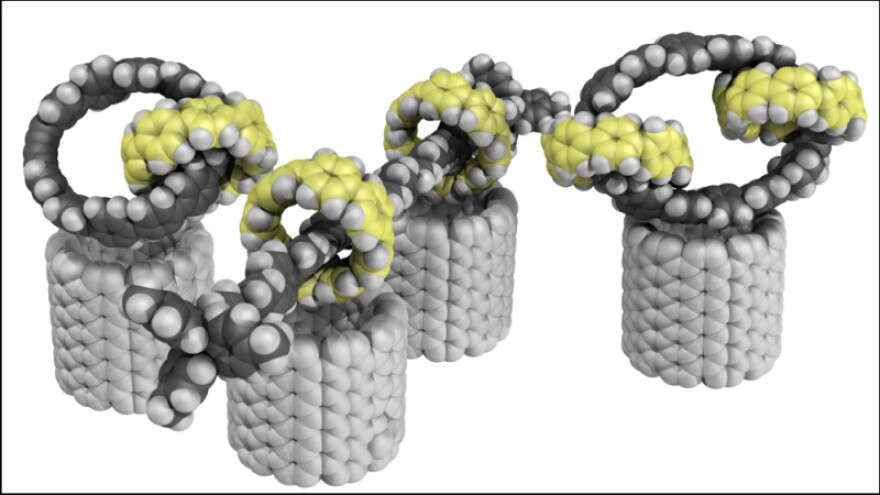Chemists at the University of Oregon recently made a big discovery in the extremely small world of nanotechnology. It’s a brand-new kind of nanomaterial, never before seen.
Materials at the nanoscale are very, very small. Imagine a single sheet of paper is about 100,000 nanometers thick. Already discovered are nanomaterials shaped like cylinders, sheets and soccer balls. By the way- the discovery of each of these materials-- nanotubes, graphene and Buckminsterfullerene- earned the Nobel Prize.
The chemists in UO professor Ramesh Jasti’s lab found a way to make carbon-based molecules of interlocking rings. “So it looks almost like a chain link fence.”

"The interlocked molecules behave differently if their size changes or if the rings are arranged differently or if different chemical elements are thrown into the mix,” Jasti said. With nanoscale adjustments, scientists could tweak the material to do exactly what they want it to do.
Being brand new, Jasti and his students are still hypothesizing its various uses. The new material has potential for an array of real-world applications- like specialized sensors or flexible electronics. Jasti says throughout human history, the discovery of a new material has been a game changer.
“There was the bronze age and there was the Silicon Age. Right? When people were able to make silicon chips and therefore computers came about. So, materials can really change the world.”

James May, a graduate student in UO Chemistry professor Ramesh Jasti’s lab is the first author on the paper. May and his colleagues report their findings published Jan. 12 in Nature Chemistry.
https://around.uoregon.edu/content/uo-chemists-cook-brand-new-kind-nanomaterial



